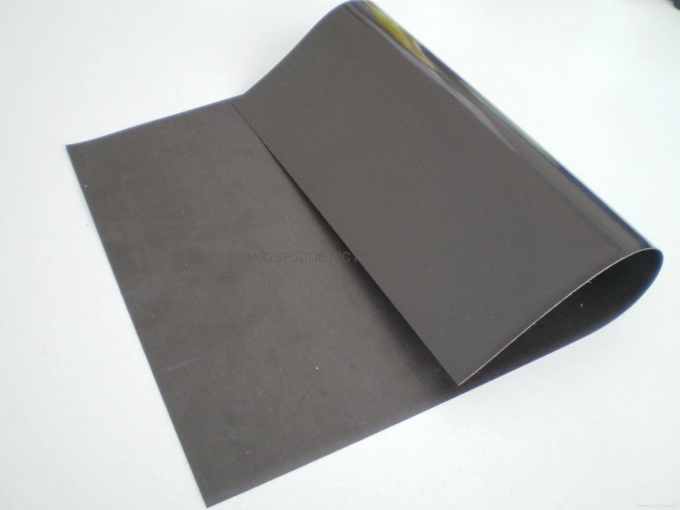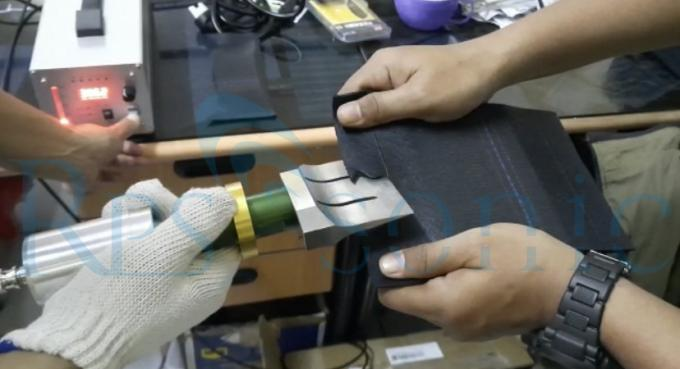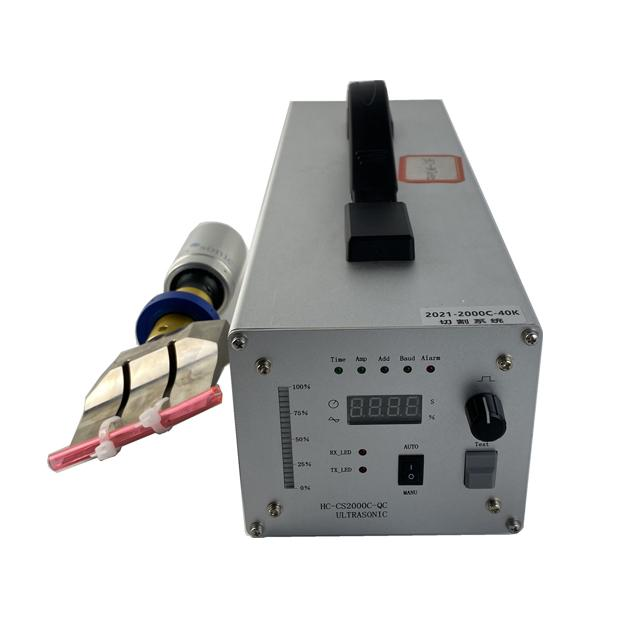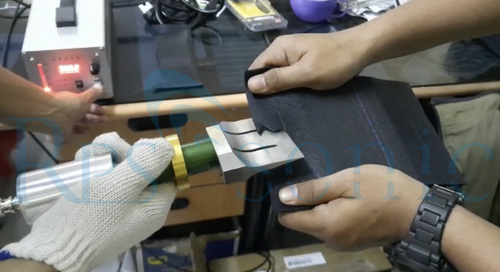Rubber is a highly elastic polymer with the characteristics of high elasticity, strong toughness and stickiness at high temperature, so it is difficult to process by traditional mechanical cutting. Ultrasonic cutting avoids the shortcomings of traditional mechanical cutting to a certain extent, and can cut rubber in various angles and directions, and the rubber is still smooth and smooth after cutting.

There are two main types of traditional rubber cutting methods: hot working and cold working. As far as rubber materials are concerned, it is more suitable for cold cutting. Cold cutting has the advantages of less heat generation, less thermal deformation, less dust generated during cutting, and the section will not age and crack due to excessive temperature. Wire cutting in cold working has higher precision, but the speed is very slow. Sometimes it is necessary to use other methods for additional perforation and wire threading to cut, and the cutting size is greatly limited. Ultrasonic rubber cutting is to use cold cutting to avoid deformation of rubber due to heating.

1.Working principle
The ultrasonic rubber cutting knife uses ultrasonic energy to locally heat the cutting part to melt it, thereby cutting. The whole cutting process will not cause chipping and damage of the cutting material. Ultrasonic cutting uses high-frequency vibration to cut rubber, rather than simply cutting with blade pressure, which reduces friction with rubber, so the blade is not easy to stick.
The ultrasonic rubber cutting knife uses high-frequency ultrasonic waves to cause the knife edge to vibrate in micro-range tens of thousands of times per second (the amplitude is only a few thousandths of an inch). Cut the rubber polymer. At the same time, the high-frequency vibration cutting makes the knife edge and the film section produce micro-interval high-speed friction, which can not only eliminate the adhesion between the knife edge and the film, but also facilitate cutting into the film due to the heat generated by the friction, thus obtaining a very flat cutting section.
2.Problems with traditional cutting
Rubber is the raw material of parts commonly used in the industry at present, and it has a wide range of applications, and many rubber parts are formed by cutting rubber sheets. Traditional rubber cutting uses mechanical cutting methods. The more common ones are grinding wheel cutting, but most of them are cut. After the rubber has been cut in a similar way, there will be several cracks on the cutting surface, and improper cutting can easily cause the bending of the cutting line. In addition, rubber tangents often have wavy bends, which are formed by heat during the cutting process. These cutting problems will affect the aesthetics of the entire rubber product.
Disc knife cutting rubber is a relatively common way of cutting rubber. Although the price is relatively cheap, there are several problems in actual cutting.
In the process of cutting rubber materials, the disc knife is prone to instability, that is, the cutting situation cannot meet the process requirements, the width of the cutting surface is not enough, the edges are curled, and the cutting surface is uneven.
The cutting angle of the disc knife is easy to change, and it is difficult to adjust the cutting angle.
The blade of the disc knife is sharp and the rotation speed is relatively fast, which is not safe during the cutting process and easily hurts people.
3.Advantages of ultrasonic cutting
High precision cutting
Ultrasonic vibration reduces the frictional resistance between the blade and the material, so that the blade can cut smoothly without deformation. Ultrasonic vibration reduces material sticking on the blade, thereby reducing downtime in cleaner production systems. Throughout the cutting process, the blade surface remains smooth, clear and clean.
Sustainable cutting
Ultrasonic blade output is monitored in real time through a closed loop circuit to ensure continuous rubber cutting.
Dry - no lubrication required
Because the ultrasonic cutting blade passes smoothly through the rubber, and the ultrasonic vibration vibrates at 20,000 to 40,000 cycles per second, there is no need to lubricate the blade throughout the process.
Avoid material flash
When the rubber is cut, it has a fusion effect on the cutting part, and the cutting part is completely sealed without causing flash of the rubber material.
Applicable to various working environments
Ultrasonic cutting equipment can be air-cooled and water-cooled to suit various working conditions and environments.
Easy to integrate into automation
Ultrasonic rubber cutting knives are small in size. In addition to hand-held operation, they can also be installed on automated integrated machines for use, which is easier to operate and has higher cutting accuracy.
4.Ultrasonic Rubber Cutting System
Ultrasonic generator
Ultrasonic generator can convert 50/60Hz AC voltage into high frequency electrical energy. Depending on the cutting application, the frequency can be between 20kHz and 40kHz.
Ultrasonic transducer
An electromechanical device that receives electrical energy from a power source and converts it into high-frequency mechanical vibrations. The transducer is then able to transmit the high frequency vibration to the horn, which in turn transmits it to the cutter head.
Booster
The horn is located between the transducer and the horn and can appropriately amplify or reduce the multiples of the high-frequency amplitude delivered by the transducer.
Ultrasonic horn
The ultrasonic tool head is the part of the cutting head, which is directly in contact with the rubber being cut. The size and shape of its cutter head are related to the frequency of ultrasonic cutting, and the cutter head with different frequencies can be adjusted according to different applications.











